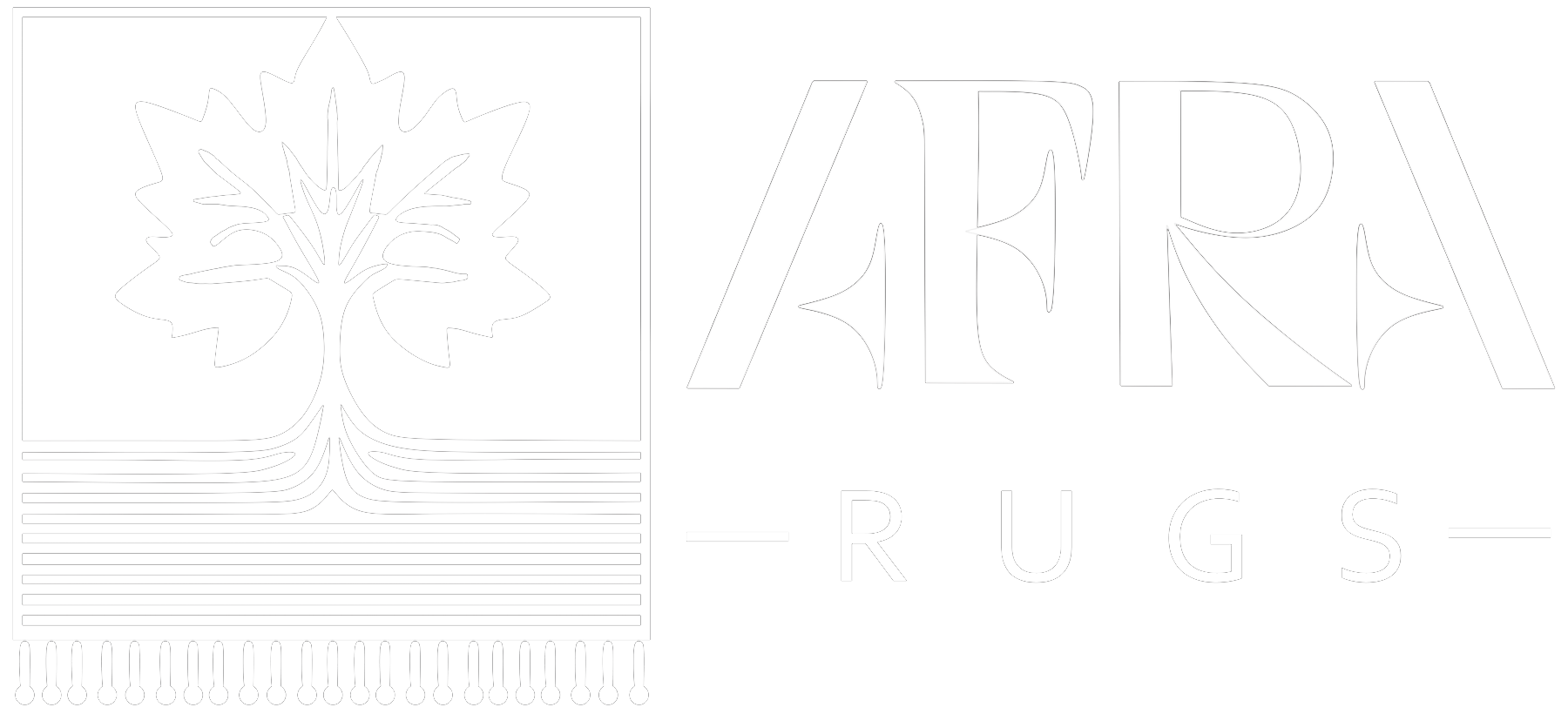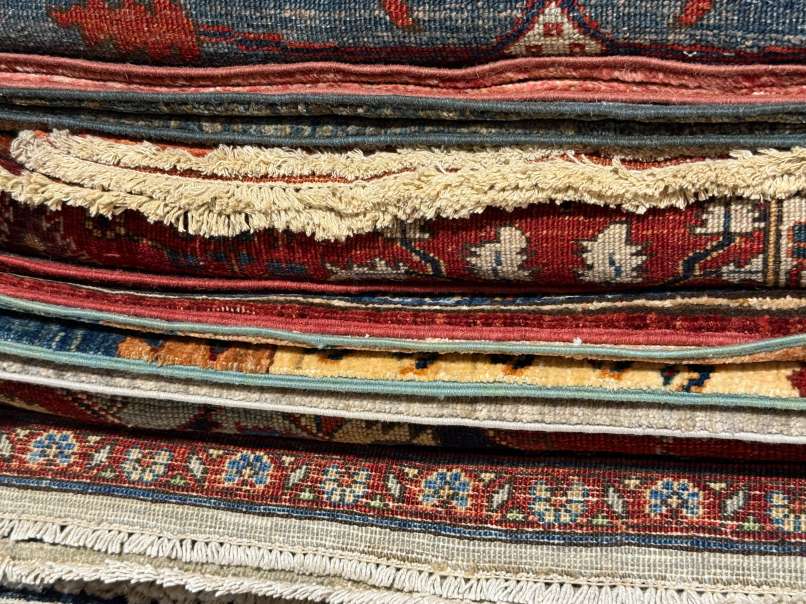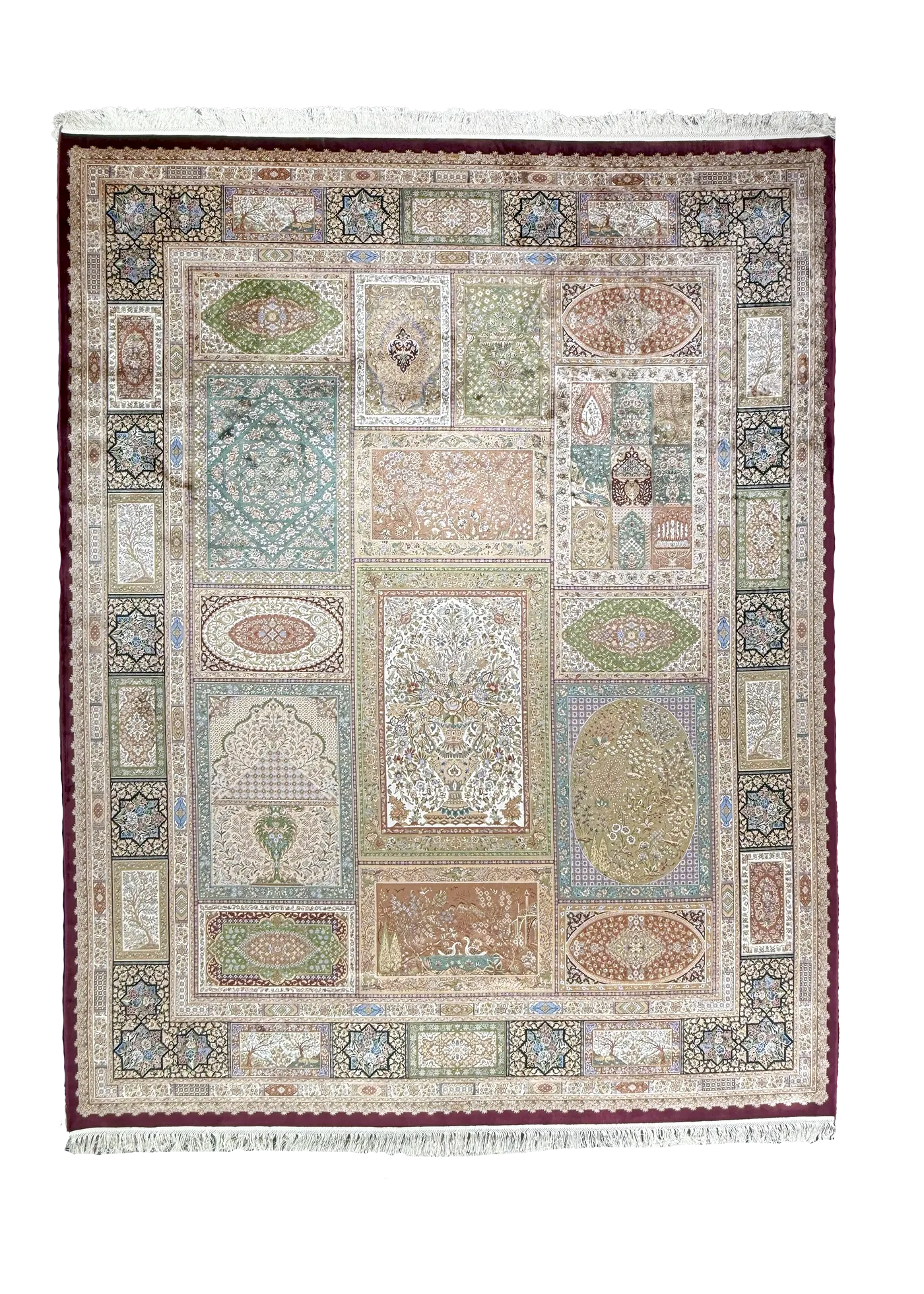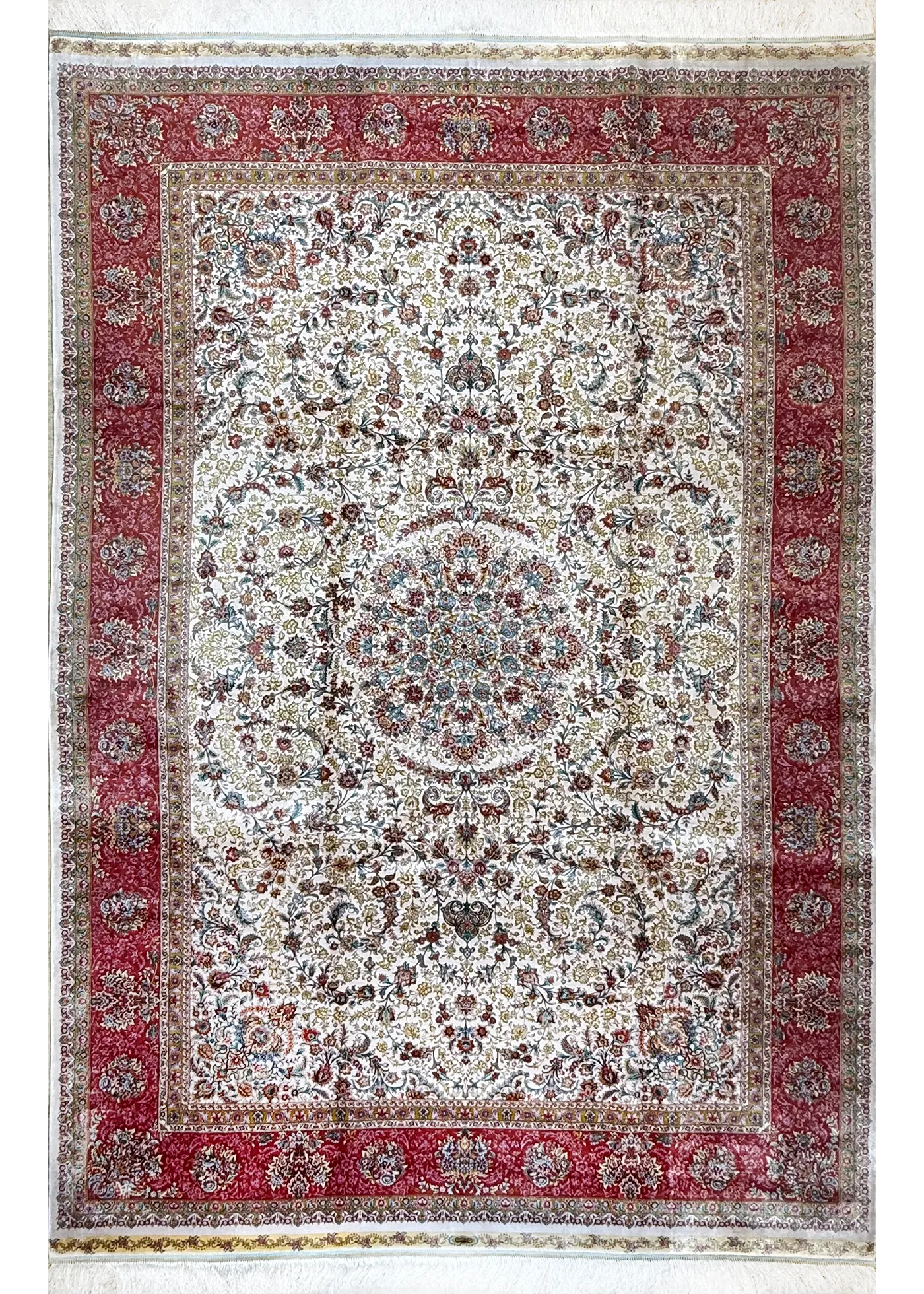Persian Rugs and Color Harmony: The Soul of Interior Design

Color is a universal language that stimulates emotion, reflects culture, and infuses character into spaces. It’s not merely a visual element, it’s a powerful tool in interior decoration and design. At Afrarugs.com, we embrace the power of color in every rug we offer, especially our vintage Persian rugs and silk Persian rug collections that breathe personality into any room.
Unlike other decorative elements, color holds a human dimension. It influences mood, sets the tone, and ignites creativity. Color doesn’t just decorate, it speaks, feels, and transforms. Each hue carries its own psychological energy. The visible spectrum, which lies between ultraviolet and infrared light, is detected by our eyes and interpreted by our brain. This visual experience directly affects our emotions and well-being.
How Warm and Cool Tones Influence Home Design with Persian Rugs
Colors are typically divided into warm (like red, orange, yellow) and cool (such as green, blue, purple) tones. On the color wheel, this classification helps designers make strategic choices to evoke specific moods or spatial illusions. For instance, a red Persian rug can energize a space, while a blue Persian rug introduces calm and serenity.
 Red Persian rug |
 Blue Persian rug |
Color harmony is essential. Green may appear warmer next to yellow but cooler beside blue. This dynamic makes color an essential feature in Persian rugs, which often combine warm and cool tones to create both balance and contrast. At Afrarugs.com, you’ll find a wide selection of decorative Persian rugs where color harmony meets cultural craftsmanship.
The Role of Color in Persian Rugs

Persian Rugs and Color Harmony
Color is central to the identity of every Persian rug. Not only does it enhance the motifs and designs, but it also distinguishes the regional origin and cultural significance of each piece. For example, the Tabriz rug is often designed with subtle, faded hues, while Qom rugs feature brighter, often pure silk Persian rug styles with radiant colors.
Color is central to the identity of every Persian rug. Not only does it enhance the intricate motifs and designs, but it also plays a fundamental role in reflecting the cultural significance and regional influences of the piece. The choice of colors in a rug is often influenced by the natural dyes available in the region, as well as the symbolic meaning attributed to certain shades. For example, red may symbolize wealth and power, while blue represents serenity and stability. Each color, with its unique wavelength and impact on the human psyche, helps evoke specific emotions and atmospheres within a space.
This relationship between color and region becomes even more evident when we examine specific types of Persian rugs. For instance, Tabriz Persian rugs, renowned for their fine quality and detailed craftsmanship, often feature subtle, faded hues that highlight the sophisticated patterns of the rug. These muted colors often in shades of soft reds, blues, and earth tones create an elegant, timeless feel that makes them a perfect addition to classic or contemporary decor.
On the other hand, Qom Persian rugs are known for their vibrant colors and luxurious silk material. These persian rugs often feature bright, radiant hues, with colors such as deep reds, rich golds, and vivid blues. The silk enhances the richness of the color, giving the rug a striking, almost luminous quality that sets it apart in any space. These bold colors are used to make a statement, adding a sense of opulence and grandeur to a room.
The color in Persian rugs goes beyond decoration—it tells a story of regional artistry and cultural traditions. Rugs are also functional, softening hard surfaces, insulating against noise and cold, hiding floor imperfections, and visually dividing spaces.
Color choices in Persian rugs are influenced by climate, culture, and personal taste. Europeans often prefer neutral Persian rugs like beige or gray, creating a calming atmosphere, while Middle Eastern designs favor bold hues such as crimson and deep earth tones. During economic hardship, more subdued tones were common.
When choosing a rug, the colors generally fall into three categories: bold hues like red and blue for a vibrant statement, neutral tones such as ivory and gray for versatility, and pastel shades like soft blues and light pinks for tranquility. These color categories shape the mood and style of a room, helping to create the perfect atmosphere.
In this way, the color of a Persian rug not only enhances a space but also reflects the rich history and cultural significance behind it.
How Persian Rug Colors Affect the Psychology of Home Interiors
Red Persian Rug: Bold, powerful, and energizing, red is a highly flexible color that can evoke many moods. It shines intensely, symbolizing life, vitality, excitement, and rebellion. As a focal point in a neutral room, a red Persian rug can infuse the space with energy and strength.
Yellow Persian Rug: Bright, uplifting, and associated with intelligence and optimism. Yellow symbolizes knowledge and enlightenment, promoting an energetic and joyful environment. It contrasts with purple, which represents ignorance and lack of control, providing a sense of mental clarity.
Orange Persian Rug: Joyful and celebratory, orange is a blend of yellow’s brightness and red’s active energy. It radiates warmth and vibrancy and is known to combat fatigue and stimulate the respiratory system. Orange brings an uplifting mood and is perfect for spaces that need a touch of cheerfulness.
Blue Persian Rug: Calming and expansive, blue has an active spiritual quality. It signifies faith, represents the infinite, and connects with the soul. A blue-colored room creates a sense of space, making it feel larger than it is, while also boosting the immune system and calming the nervous system. However, prolonged exposure to blue can lead to fatigue and depression.
Green Persian Rug: Healing and hopeful, green is a blend of blue’s tranquility and yellow’s optimism. It represents peace, hope, and balance, harmonizing body, mind, and spirit. Green helps reduce blood pressure, calms nervous tension, and creates a sense of overall well-being.
Pink Persian Rug: Mysterious and luxurious, pink is the opposite of yellow on the color wheel, creating a striking contrast. It has a calming effect on the heart, purifies the blood, and helps reduce fear. Pink is ideal for introspective spaces that promote a sense of elegance and tranquility. Explore these tones through our curated collections at Afrarugs.com.
Strategic Use of Rugs for Interior Harmony
- Choose colors that reflect your personality.
- Coordinate with existing furniture and lighting.
- Use patterned Persian rugs in high-traffic or dusty areas.
- Place lighter-toned silk Persian rugs in low-traffic spaces.
Practical Tips for Choosing Persian Carpet Colors
- To make a space feel smaller: Choose large patterns or rugs with intricate Persian motifs. The complexity of the design can make the area feel more enclosed and intimate.
- Ceiling height vs. flooring: High-pile rugs can visually bring the floor closer, reducing the perceived height of the room and creating a cozier atmosphere.
- Dark floors, light walls: Opt for dark-colored floors paired with light walls to create a sense of intimacy and grounding within the space.
- Light floors, dark walls: Light-colored floors with dark walls can brighten the room and make it appear more expansive.
- Unified color scheme: Using the same Persian rug style across different rooms helps create a cohesive look, uniting the overall design and flow of your home.
At Afrarugs.com, we help clients around the world bring thoughtful color choices into their homes with authentic, high-quality Persian rugs. Browse our collection of Modern Persian rugs, traditional Persian carpets, and vintage Persian rugs to find the perfect color and pattern that speaks to you.




